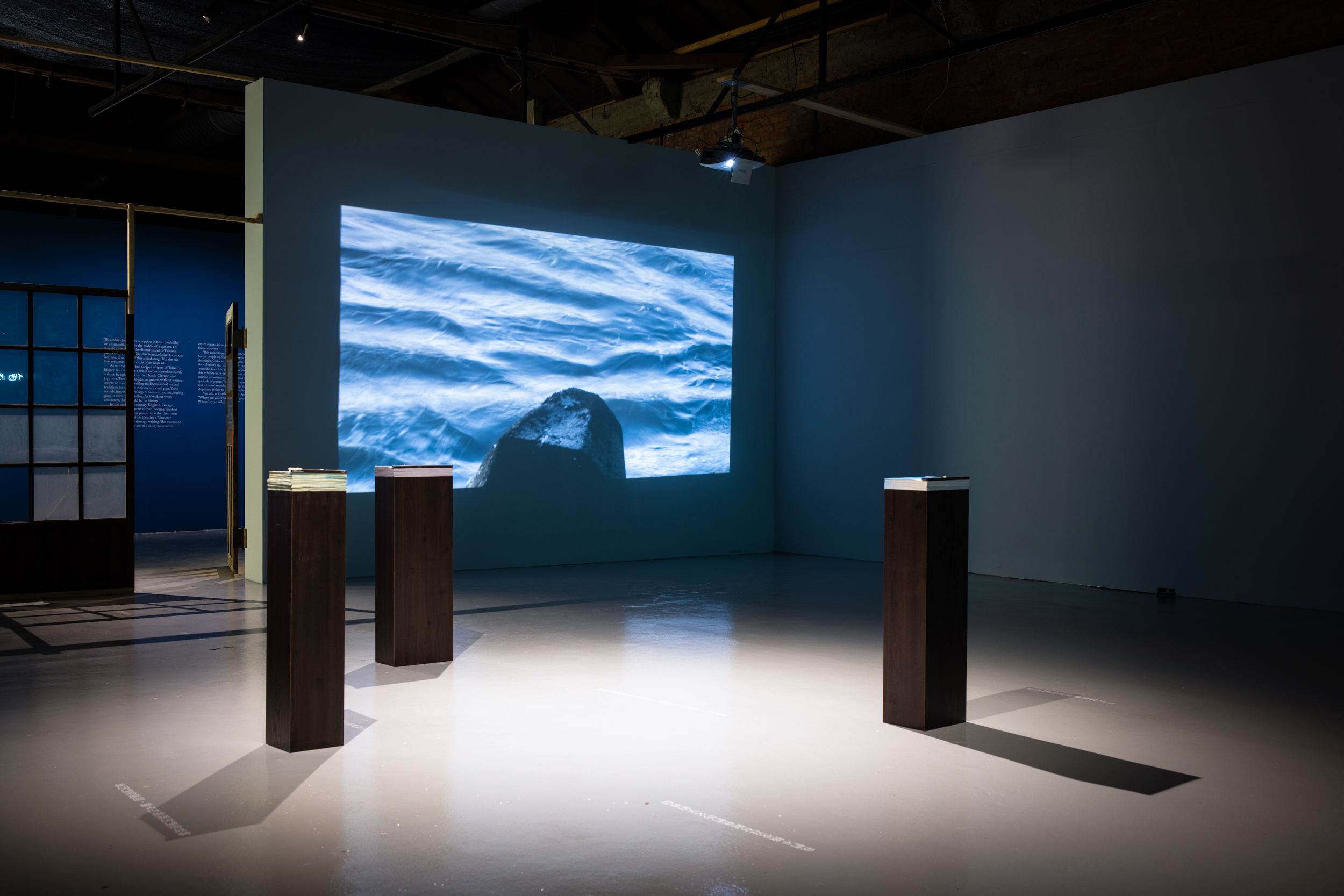A Piece of History
2024, Book, Installation
Book 1: Written Word
Book 2: Oceans
Book 3: Visual History
第一冊:《書寫、語言》
第二冊:《海洋》
第三冊:《視覺史》

Anthropologist Eric Wolf's in his book “Europe and the People Without History” challenges the Eurocentric historical narrative that dismisses societies without written records as ahistorical. By re-examining historical texts and images, these traditional forms of historical representation, we question: Can history exist without script characters?
Taiwan's indigenous peoples primarily preserved their histories through oral traditions, vital for maintaining their historical knowledge. However, when attempting to investigate Taiwan's past, we encountered an obstacle: there are no direct written records from indigenous societies themselves. Instead, the available written documentation comes primarily from colonial-era European, Chinese, and Japanese sources.
This work comprises three books, each containing hundreds of pages compiled from textual and visual fragments of Taiwan's early history. These books can be seen as fragments of archives, highlighting the incompleteness of history.
Audiences are invited to tear off one page from the books with the knife sculptures and take away a small part of history with them.
Three knife sculptures shaped after the Qing dynasty's “aboriginal boundary” (1750-1790), the policy that segregated Han settlers from indigenous Taiwanese. These knives physically tear book pages, leaving imprints of the border line onto the paper.
Paper, Copper, Wooden pedestal
280 × 180 cm; 230 × 180 cm; 180 × 180 cm

Exhibition views:
You do not need to worry about what we said (10/2024–04/2025),
Soulangh Artist Village, Tainan (TW)
Duo Exhibition of Wai Lun Hsu and Lai Ping So
















A Piece of History
2024, Book, Installation
Book 1: Written Word |Book 2: Oceans |Book 3: Visual History
Paper, Copper, Wooden pedestal
280 × 180 cm; 230 × 180 cm; 180 × 180 cm
人類學家Eric R. Wolf在其著作《歐洲與沒有歷史的民族》中挑戰了歐洲中心主義的歷史敘事—將沒有文字記錄的社會視為無歷史的。藉著重新審視歷史的文本和圖像,這些傳統的歷史表現形式,我們提出疑問:沒有文字符號,歷史能否存在?
台灣原住民主要通過口述傳統保存他們的歷史和關於過去的知識。所以當我們試圖調查台灣的過去時,遇到了一個障礙:沒有來自原住民群體本身的直接書面記錄。相反,可閱讀的書面文獻主要來自殖民時期的歐洲、中國和日本來源,都是他者的書寫。
這件作品由三本書組成,每本書包含數百頁從台灣早期歷史的文本和視覺片段編排而成。這些書可視為檔案的斷片,突出了歷史的不完整性。
觀眾可以用刀型雕塑從這幾本書中撕下一頁,帶走一小部分歷史。
書上面有三個刀雕塑,其形狀模仿清朝的「番界」(1750-1790),當年將漢族移民與台灣原住民分隔開來的政策。觀眾利用這些邊界撕開書頁,在紙上留下邊界線的印記。

